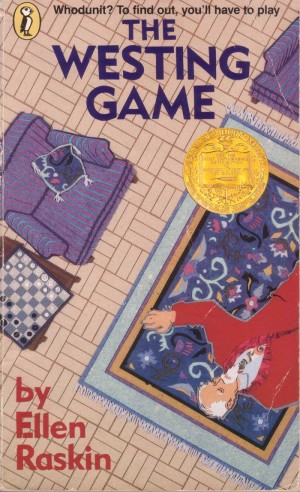The Westing game begins when a delivery man sets in motion a series of events that lead to death, distrust, lying, stealing, impostors, deception, and – well, you need to read it for yourself. The characters are complex, and with sixteen participants in the game, you will find yourself frantically searching the clues to be the first to solve the mystery. The first time I read this book, I took notes like a detective and diligently tried to solve the mystery. Like all great books, I did not solve it first, but was surprised to see how well the clues pointed to the answer throughout the story (and I still didn’t see it!).
Recently, I reread it and decided to just go along for the ride. I didn’t remember the ending at all and enjoyed the fact that it kept me guessing all over again. I will not tell you more, except that you must read it. In the new edition I purchased there is an introduction written by Ann Durell, a friend of Ms. Raskin, that gives wonderful insight into the author. She wrote this book without planning anything!!!
A Newbery Award winner, The Westing Game will keep you guessing until the very end.
Discussion/Project Ideas:
1. The clues and participants in The Westing Game lend themselves to a variety of organizational strategies. Students are taught many ways to structure information for better understanding, but this book gives them a great opportunity to come up with their own systems and justify why one works best.
2. They can present their strategies upon completion of the book and compare and contrast strengths and weakness. Perhaps, they can even come up with a master format.
3. Each character is slowly revealed in more depth as the book moves along. During reading, have each student choose one person and do a character sketch. A character sketch is when you describe all the things about a character’s life that makes them a whole person – not just the parts that are described in the book. In this case, choose a character, write what is known from the book and fill in logical blanks. There are many templates online that you can use if you search “Character Sketch.” As the book goes along, you can see how new details affect your sketch. If you would rather wait until you are done reading and do it all at the end, that would still provide great opportunities for creatively completing a detailed character sketch. Remember, character consistency is the goal.
4. Characterization and character growth are an unusually large part of the plot in this book. Make a chart with three columns and list all of all sixteen characters in the first one. In the second column, describe each character at the beginning of the book (line it up so that you are making a chart). In the third column, describe how the character is different at the end. On the back of your chart, list the eight sets of partners and tell why you think each one was paired together. Be prepared to back up your reasons with examples.

